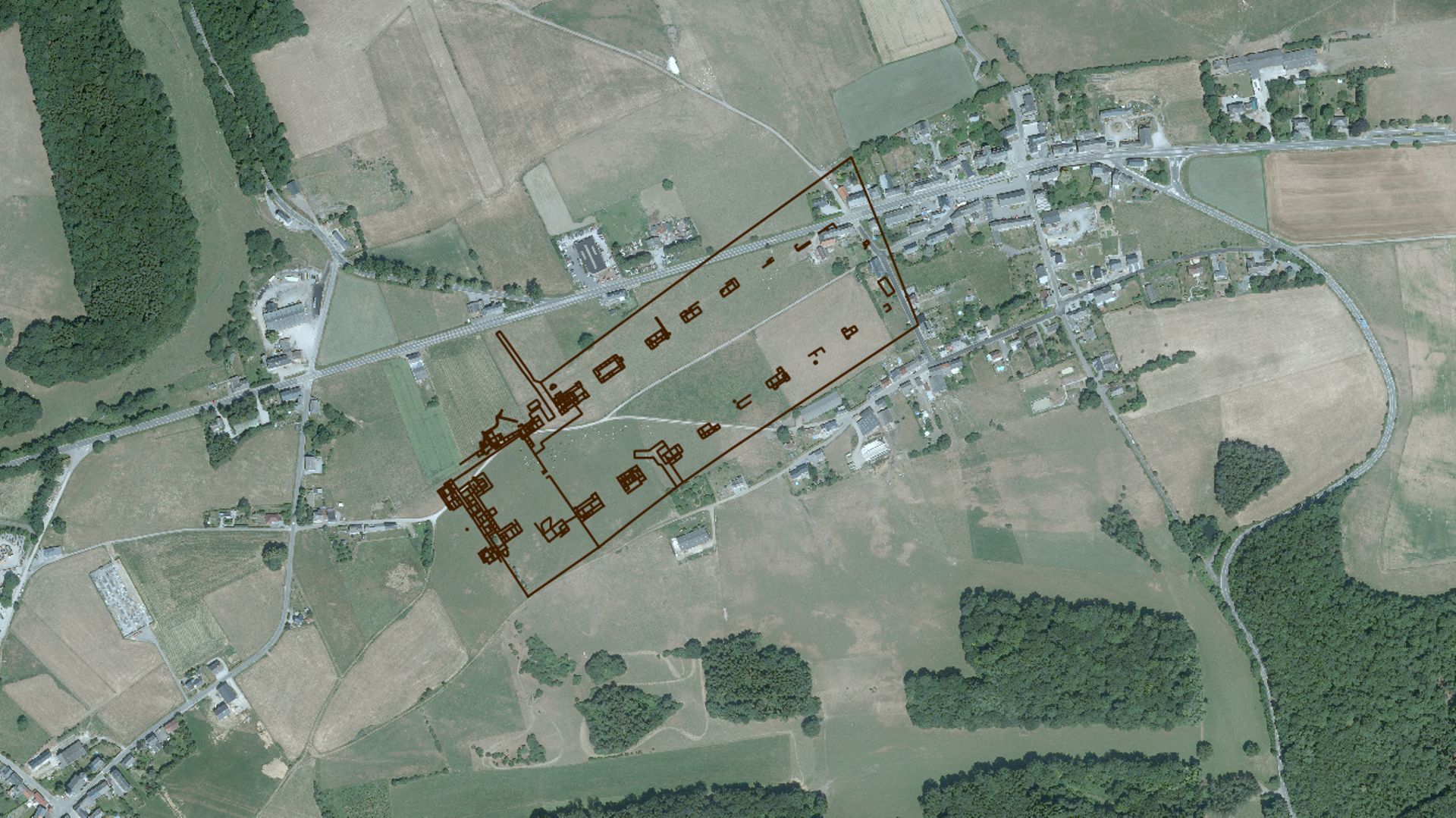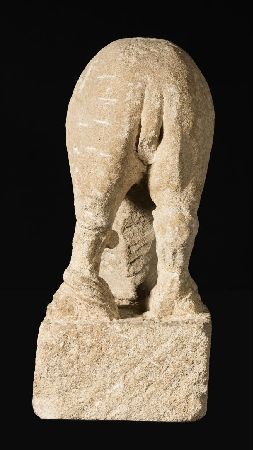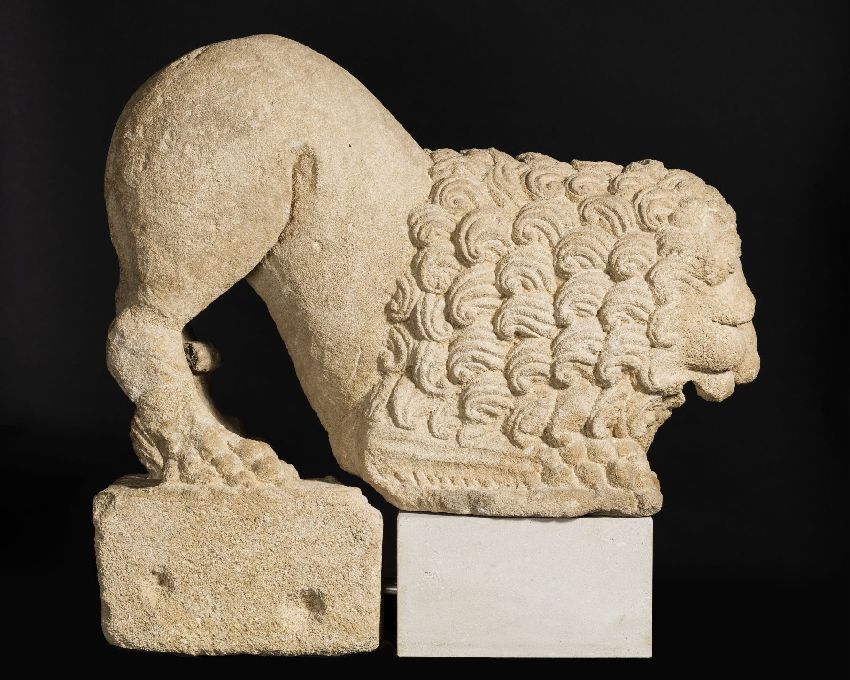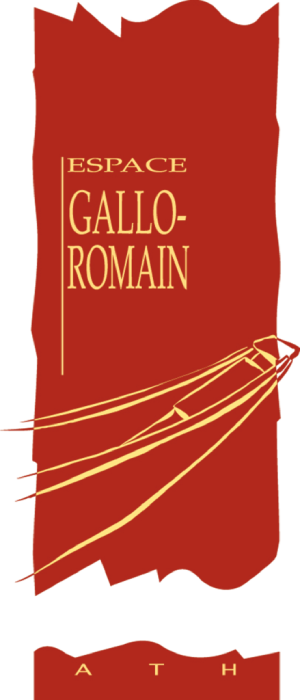Lion-fountain in the main courtyard of the Gallo-Roman villa at Anthée
(1st-) 2nd century PCN
Pierre d’Euville (Meuse, France
76cm – W. 84cm – D. 35cm
Namur Archaeological Museum
Property of the Société archéologique de Namur
Classified on 9 June 2017

copyright : © AWaP
This statue of a lion was discovered in the Villa du Grand Bon Dieu in Anthée (Onhaye), during excavations carried out between 1863 and 1872 by Canon Charles Grosjean for the Société archéologique de Namur. This aristocratic rural residence belonged to the type of large villa with multiple pavilions in a row, typical of the Gallic provinces. Covering an area of 12 hectares in its last state, the main building was lined, probably during the 2nd century AD, with a luxurious architectural décor of Belgian marble and marble limestone. A pressurised hydraulic system supplied at least two thermal suites and outdoor water features, including the fountain-statue.
The work represents a lion in the round, its head raised and its hindquarters erect. A duct runs through it, starting under the torso and ending in the mouth. The mane, clawed paws and tail wrapped around the ankle are particularly well rendered. The material chosen is Euville stone, a Jurassic limestone quarried from the coasts of the Meuse in French Lorraine and used mainly for exterior decorations. The subject was inspired by the symbolic concept of the garden in the Mediterranean world. The image of the lion mirroring the water echoes the regenerative flooding of the Nile during the passage under the sign of the lion, as described by Plutarch (1st-2nd centuries AD).
While the animal attitude reminds us of certain funerary sculptures from the 1st and 2nd centuries in Gaul and the Germanies, the stocky shape of its muzzle and the treatment of its mane, divided by a stripe above the middle of the forehead, suggest that it is stylistically linked to a series of funerary sculptures from northern Italy. There are no parallels in the city of Tongeren and no fountain lions of this quality in neighbouring cities. In the Villa d’Anthée, this crouching lion was certainly intended to enliven the square bluestone ornamental pool in front of the eastern façade of the main building, in a play of black and white contrasts that was very popular in the Roman period.
The Anthée lion is a rare and high-quality piece, distinguished by its refined style, consistent workmanship and state of preservation. The lion size and drinking attitude make it an unicum in the history of ancient art in northern Gaul.




copyright: CC BY 4.0 KIK-IRPA, Brussels, X132536, 38, 42, 45
Authors: Catherine Coquelet and Laurent Verslype.
Bibliography:
DEL MARMOL E., “Villa d’Anthée”, in Annals of the Archaeological Society of Namur, 14, 1877, pp. 165-194 and 15, 1881, pp. 1-40.
DESSALES H., Water sharing. Fountains and hydraulic distribution in Western domestic architecture, Rome, 2013 (Library of the French School of Rome, 351).
MARINI CALVANI M., “Leoni funerari romani in Italia”, in Bolletino d’arte, 6, 1980, pp. 7-14.

Recent Comments